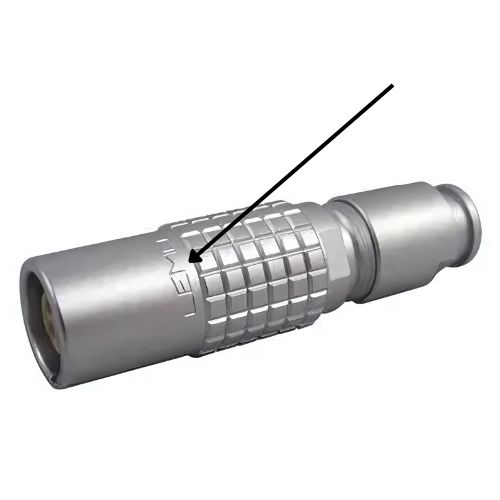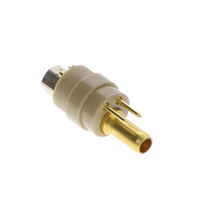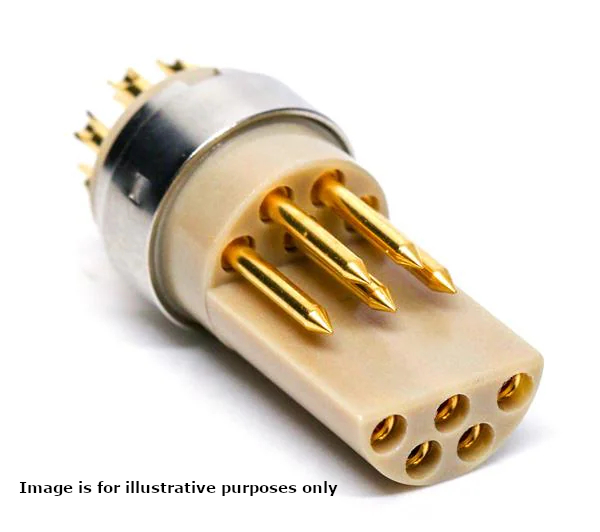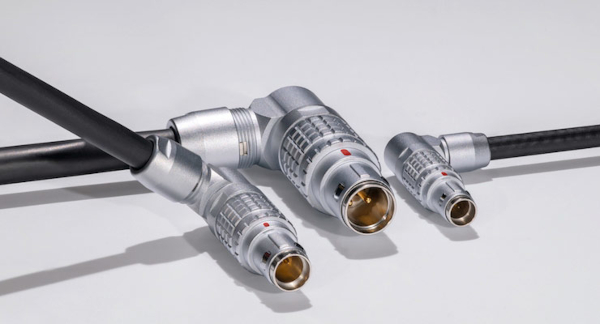Lemo has over 90,000 combinations of connectors, so identifying the one you have can be daunting. However, there are a few rules that can help the identification process. As there are many configurations this is only a general guide. It is always recommended that you contact one of our LEMO specialists to confirm the connector. This guide describes the basic steps in identifying a part number for only the common LEMO connector series.
Cable Plugs and Cable Sockets
Identifying from the connector itself
The first step is to confirm that it is a genuine LEMO connector. It will have LEMO engraved on the side of the connector itself, along with the first part of the LEMO code.

Determining the model, size and series
The first part of the LEMO code on the connector should give you the model and size, ie FGG.1B or PHG.2B. This is the first 5 characters in a code:
FGG.1B.XXX.XXXXXXX Male G keyway line plug in the 1B size
FFA.1S.XXX.XXXXXXX Male line plug in the 1S size
PHA.0B.XXX.XXXXXXX Female A keyway line socket in the 0B size
The third character in the B, K, T, M, F series identifies the keyway of the connector. Each series has several keyways available, please refer to the matching catalogue to identify these.
Determining the contact type

The next step is to determine the insert/contact type. If there is only one electrical contact it will be either a low voltage pin, coaxial, triaxial, or a high voltage contact. As these come is several configurations, it is best you contact one of the LEMO consultants directly.
If there are multiple contacts, they may be low voltage, coaxial, triaxial, high voltage, fiber optic, or a combination thereof. For the most common multiple contact connector, with low voltage pins, the sixth position of the part number is a “3”.
Determine the insert/contact configuration

Having determined the first digit, for low voltage configurations, count the number of pins in the connector, these are the 7th and 8th position of the code.
FGG.1B.308.XXXXXXX Male G keyway 1B 8 pin line plug
The next set of characters relates to the shell and insulator material, the contact termination type, cable diameter that it is being attached to, and the variant letter.
Determine the shell material
The 9th position determines the shell material. The most common shell material is brass with matte chrome plating and is indicated by the letter “C”. Other shell materials are available, contact our LEMO consultants for further details.
FGG.1B.308.CXXXXXX Male G keyway 1B 8 pin line plug with shell material of chrome plated brass
Determine insert material
The 10th position is the insulator material of the insert. The most common insert material is ‘PEEK’ plastic, a pale beige in colour, and is the letter ‘L’ (or sometimes Y). Coax inserts are most often PTFE, which is white, and indicated with the letter “T”. Other insert materials are available and are indicated in a table in the catalogues. Contact LEMO if you are unable to determine the material
FGG.1B.308.CLAXXXX Male G keyway 1B 8 pin line plug with shell material of chrome plated brass and a male solder insert
Determining the termination type
The 11th position indicates the type of pin termination. In a male plug if the termination is solder, the termination is type “A”. A crimp connection is a “C”. In a female line socket connector female solder pin, type “L”, or crimp type “M” are possible, also apply for reverse sex configurations (female contacts in a male plug).
Panel socket also come with choices of solder bucket, straight or elbow PCB mount or crimp. To determine the correct code, contact one of the LEMO sales consultants.
PHG.1B.308.CLLXXXX Female 8 pin line socket with a shell material of chrome plated brass and a female solder insert
Determine the collet size and type
Measure the diameter of the cable to determine the collet size. In the collet tables of the catalogue relevant to your Connector series find the appropriate table for your size and series as determined in step 2. Find the cable max and min dimension, which best describes your cable, and then look for the ‘referenced type’ of the collet best suited for your cable. If your connector is not terminated, measure the inside diameter of the collet to determine its size.
FGG.1B.308.CLAD52Z Cable OD is between 4.2mm and 5.2mm, the Z means it has a nut that accepts a strain relief sleeve.
The last position is reserved for options (like an additional bend relief etc.) and is not required for a viable connector.
If you are still unsure, contact one of our LEMO sales team via email at lemo@johnbarry.com.au , and include pictures of the connector. We are happy to help.




